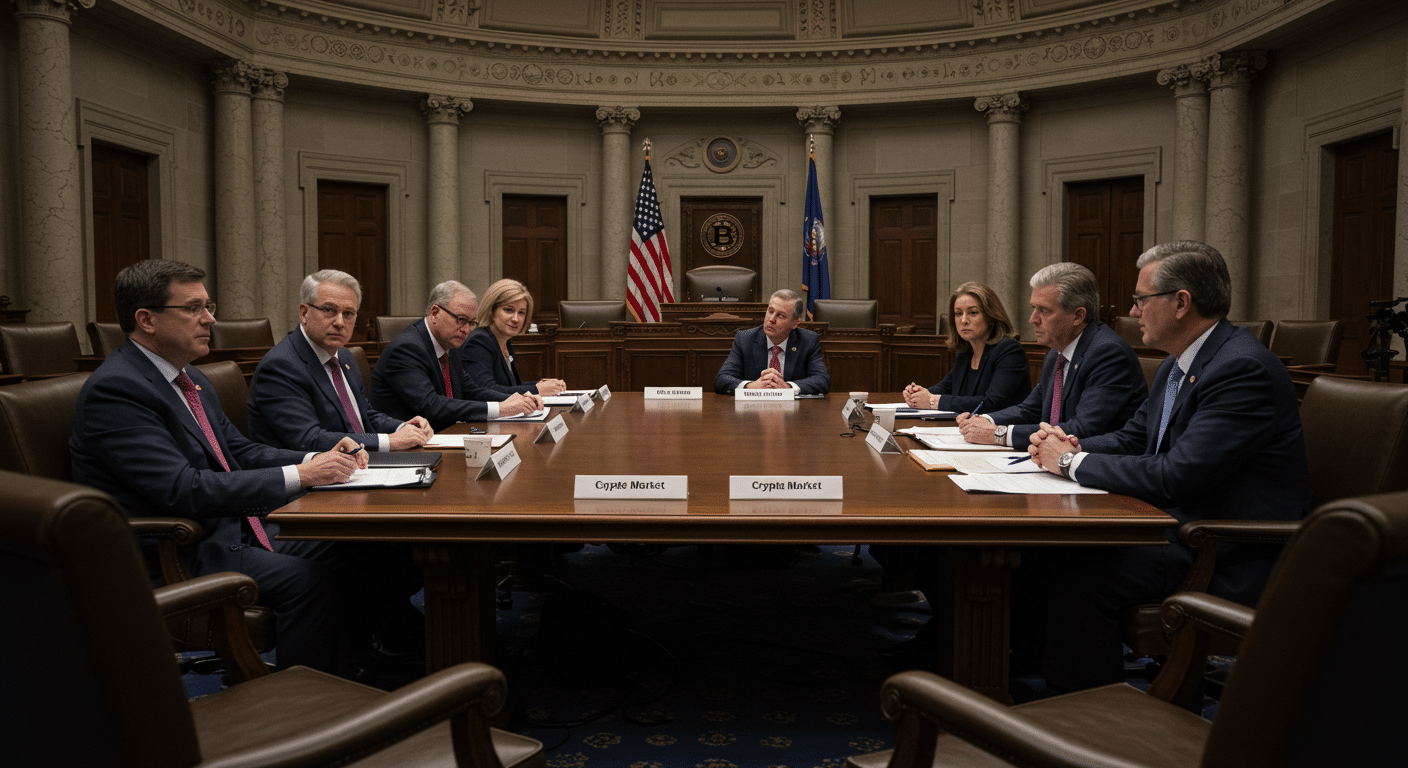The Senate Banking Committee has unveiled a seven-point framework aimed at overhauling the crypto market’s regulatory structure. Lawmakers pointed out that Congress needs to develop legislation as soon as possible to give participants clarity and certainty.
Senators Define Crypto Market Oversight Roles
Senators proposed a legal boundary between crypto market securities and commodities to clarify regulatory oversight responsibilities. They intend to give the Securities and Exchange Commission (SEC) the authority to regulate token securities and the Commodity Futures Trading Commission (CFTC) the authority to regulate commodities. This department aims to ease enforcement and prevent duplication of agency work.
The framework does not propose a new crypto body and is instead pegged on regulators in existence to oversee the sector. It also suggests new streams of registration, which permit digital projects to bring up finance on custom exemptions. This may allow increased compliance with the law and the drive to innovate blockchain technology.

The committee members underlined the importance of preserving investor protection by responding to risks using the existing infrastructure. They backed capital regulations that were matched to the project’s risk and segregated customers’ assets. These other measures are intended to bridge the untold gaps in consumer protection without stifling good innovation.
Lawmakers Support Self-Custody in Crypto Regulation
Lawmakers called for strong self-custody rights to remain intact as regulations advance in the crypto market. The framework takes into account essential dissimilarities between centralized enterprises and decentralized protocols, justifying a more differentiated outline of regulation. This will make sure that the regulations are ready without interfering with the advancement of decentralized finance.

The framework applauds tokenization as a market optimization of efficiency rather than a financial innovation. This perception is in line with the sentiments of the industry players, who have asked legislators to consider utility rather than a new classification. This would facilitate easier integration with conventional systems.
Committee members and expert witnesses established that the unavailability of clear guidelines had seen developers and investors move to foreign countries. The leading players in the industry claim that the existing uncertainty is a deterrent to innovation and regulatory arbitrage. The demerit in this will be addressed by the proposed structure, which will offer specific standards and legal certainty.
Senate Pushes Unified Crypto Enforcement Strategy
The proposal includes measures to tighten anti-money laundering tools by extending the Bank Secrecy Act to offshore platforms. Lawmakers recommended applying IEEPA instruments to foreign entities that serve U.S. users within the crypto market. This step aims to close legal gaps while preserving domestic innovation.
Committee staff are preparing to draft statutory language that incorporates the plan’s major principles. The text will define SEC jurisdiction over securities offerings and secondary market trading. Simultaneously, the CFTC will handle commodity tokens and related derivative products.
The plan encourages coordination across federal agencies through pilot programs and no-action letters to prevent repetitive examinations. Lawmakers expect these measures to foster regulatory consistency and enhance legal compliance. Bipartisan backing is growing, as seen in the recent GENIUS Act vote.
Summary
The Senate Banking Committee introduced a seven-point plan to regulate the crypto market and clarify asset classifications. The framework separates some of the supervision under the SEC and the CFTC, encourages innovation, and suggests robust consumer protection. Legislators are confident they will soon approve an ideal draft of legislation, which shows a broad bipartisan effort to establish the still-developing universe of digital assets in the U.S.
FAQs
What does the Senate framework mean for the crypto market?
It offers a clear legal structure for classifying and regulating crypto assets using existing federal agencies.
Who will regulate securities and commodities in the crypto market?
The SEC will regulate securities tokens, and the CFTC will oversee commodity tokens and derivatives.
How does the plan support innovation?
It proposes updated capital-raising exemptions, encourages tokenization, and promotes self-custody and decentralization protections.
Will there be a new crypto regulatory agency?
No. The framework assigns responsibilities to current regulators like the SEC and CFTC.
What protections are proposed for users?
It includes rules on asset segregation, anti-fraud measures, and right-sized capital requirements for intermediaries.
Glossary of Key Terms
Crypto Market: A digital marketplace where users trade cryptocurrencies, tokens, and related financial products.
Tokenization: Converting real or digital assets into blockchain-based tokens for easier transfer and transparency.
SEC (Securities and Exchange Commission): A federal agency overseeing securities markets and investor protection.
CFTC (Commodity Futures Trading Commission): A regulatory agency managing U.S. derivatives and commodity futures markets.
Self-Custody: The ability of a user to store and control their own digital assets without third-party interference.
Exemption: A legal allowance letting projects raise capital or operate without full regulatory registration under specific conditions.
IEEPA: International Emergency Economic Powers Act, used to restrict foreign entities posing risks to the U.S.
Anti-Money Laundering (AML): Legal protocols to prevent criminal organizations from disguising funds as legitimate.
No-Action Letter: A regulatory tool signaling that an agency will not take enforcement action under certain conditions.
Segregation Rules: Requirements that separate customer assets from corporate funds to protect users in case of bankruptcy.





























